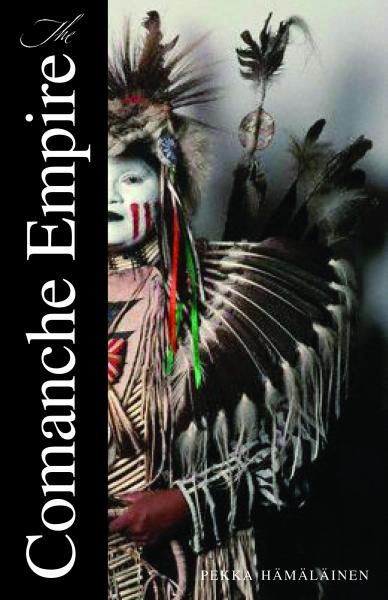With the semester having come to an end, it was refreshing to take a few weeks off from normal reading and writing routines. I’m in the middle of a long section on Durkheim and it has been nice to get him off my brain for a bit. It has also been nice to browse the local bookstore for nothing in particular but something different and less directly relevant to the book and blog. Over the past two weeks, I’ve had the pleasure of consuming a number of books that aren’t exactly summer reads but are a nice change of pace from late-Victorian to early-modern anthropology and sociology. In varying degrees, I recommend the following:
The Comanche Empire (2009) by Pekka Hamalainen: This book is a game-changer and eye-opener. If I could find other cliches that would convey its superlative nature, I would. For the past 5 years, I’ve been intensively reading Native American ethnohistories in an effort to gain a deep understanding of animist worldviews. I thought, as a result, that I had encountered nearly everything. I was wrong.

This book powerfully disrupts standard narratives of native history, and completely re-orients the prism through which we view that history. It is not, however, simply one of those well-intentioned attempts to give the natives a voice or tell the story from their perspective. In this compelling and amply documented rendering, the Comanches are an incredibly adaptive and highly sophisticated group that have much more than mere agency or voice: they are power brokers engaged with European imperial powers on their own terms. And for over 100 years, the Comanches won the imperial game.
Comanche Empire is the perfect antidote to the countless histories that present natives as simple, primitive, passive, or reactionary. The Comanche were anything but. This book also stands in stark contrast to the United States and Texas-centric accounts that utterly fail to address the geopolitical dynamics and imperial contexts in which the Comanches made their own history, shaped the region, and dominated nearly everyone on the periphery. They could not have done this for so long and so successfully if they were, as popular writer SC Gwynne claims in his massively flawed Empire of the Summer Moon (2011), simple hunter-gatherers who (as he states in this NPR interview) lacked “social organization or religious organization.” This is an astonishing and ridiculous statement.
One of the most fascinating aspects of Comanche Empire is the way in which the tribe was structured and bound together. Comanches were ecumenical: anyone could be or become Comanche so long as they spoke the language and treated other group members as fictive kin. That was it. They were not concerned with religion or “race” and didn’t use these to construct Comanche identity. This conception clearly disrupts the Durkheimian and group level selection idea that groups bind and adhere through “religion.”
This is a hugely important book written in a crisp, muscular style that is rare for serious works of history. Get it.
The Killing of Crazy Horse (2011) by Thomas Powers: This is another stunningly good book. Again, I thought I had read everything about Crazy Horse, Lakota culture, and the Sioux wars, so I wasn’t expecting much and didn’t think much could be added. Again, I was wrong.
This book is a lyrical tour de force that treats these issues kaleidoscopically, disrupting standard narratives and historical understandings at each step of the way. Aside from its sheer beauty, it is chock full of material that sheds considerable light on the complexities of Lakota culture, identity, and politics during the latter half of the 19th century. Powers has a distinctive voice that occasionally brings to mind Walt Whitman or Cormac McCarthy. This book really brings the Lakota to life and Powers revels in his subjects.
Another important book. Get it.
The Shaman’s Coat: A Native History of Siberia (2002) by Anna Reid: This book is part history and part travelogue. If you are not familiar with Siberian hunter-gatherers and the basics of their history, this is a good place to start. It does not have much to do with Siberian shamanism, which was fine by me because that subject almost been over-studied to the point of exhaustion. This is certainly a good beach substitute for the classic ethnohistory in this field, James Forsyth’s History of the Peoples of Siberia: Russia’s North Asian Colony 1581:1990 (1994). Many will be surprised (or not) to learn that Siberian tribes have suffered largely similar fates to indigenes in America, Australia, and Africa. Despite all this cultural destruction, indigene societies on all these continents still remain and resist.
The Druids (1995) by Peter Berresford Ellis: This is a solid introduction to what is and is not known about the Druids. Without any neo-pagan or earth-worshipping woo, Ellis presents the Druids as an intellectual Celtic caste that fulfilled all manner of leading or “upper” social roles. They were not simply religious or spiritual leaders and there is no evidence, as the Romans speciously claimed, that they sacrificed humans. This is a comprehensive (yet short and readable) overview that also contains critical commentary on sources. This is a jumping off book with a good bibliography. It won’t interest Stonehenge spiritualists or New Agers. I count this as a significant plus.

